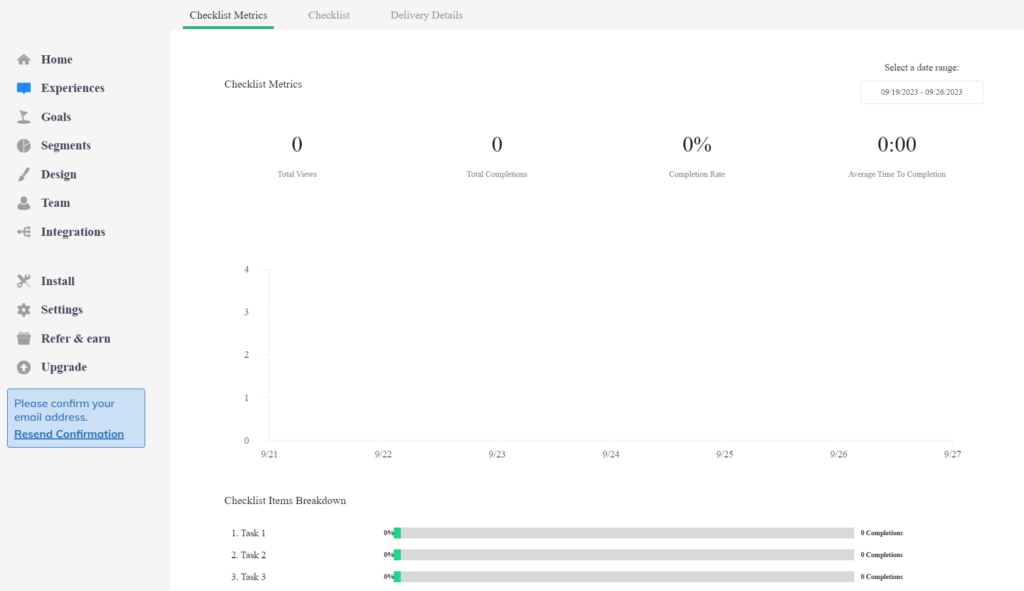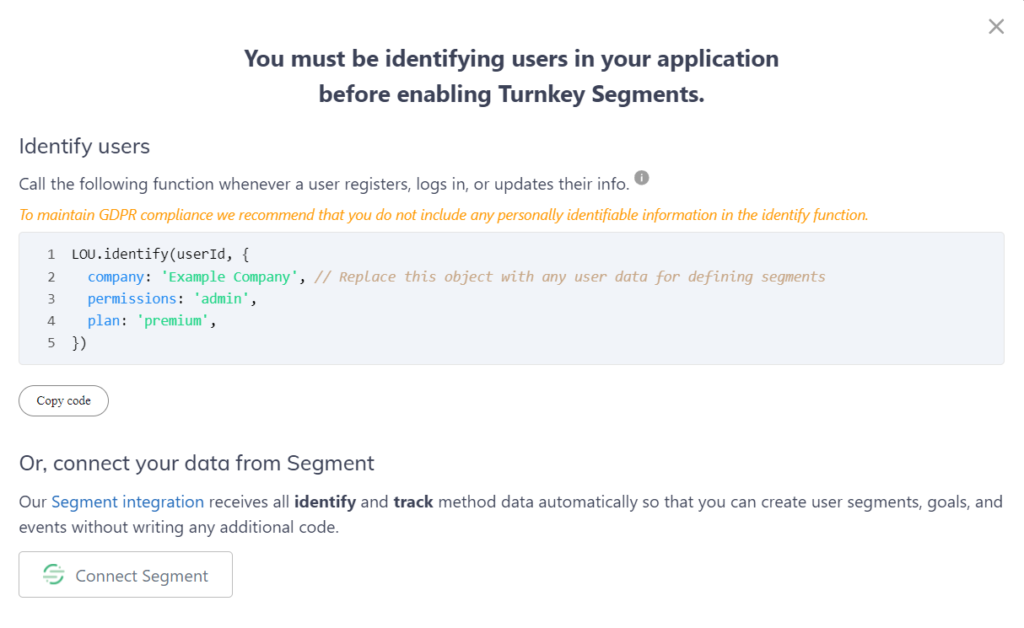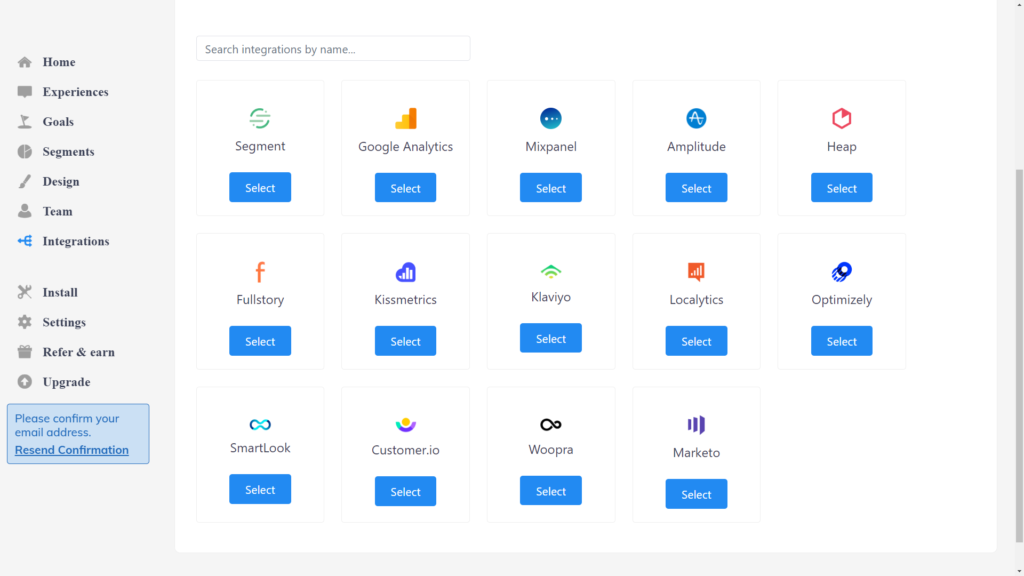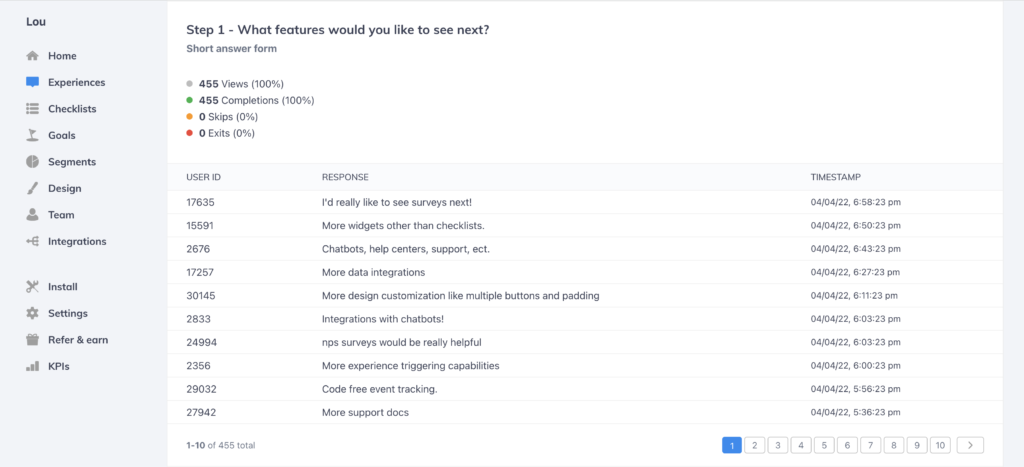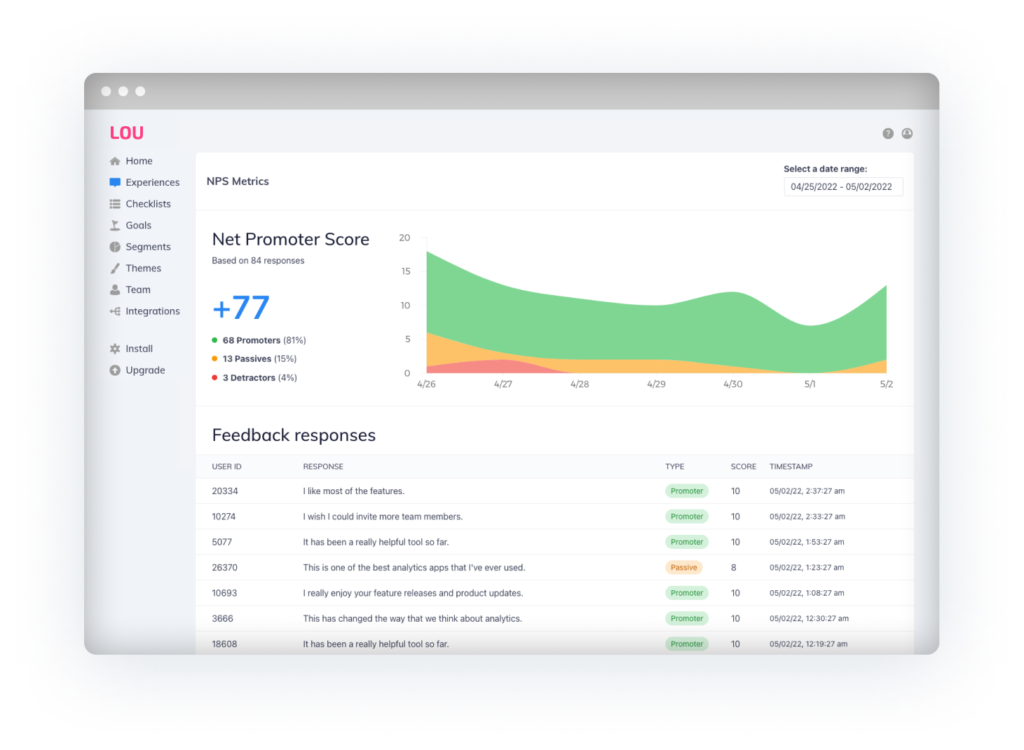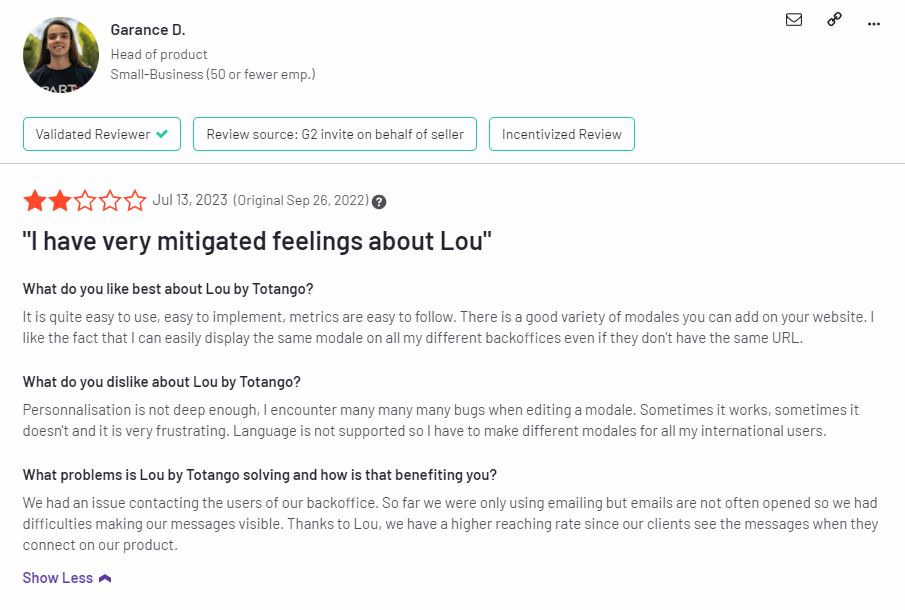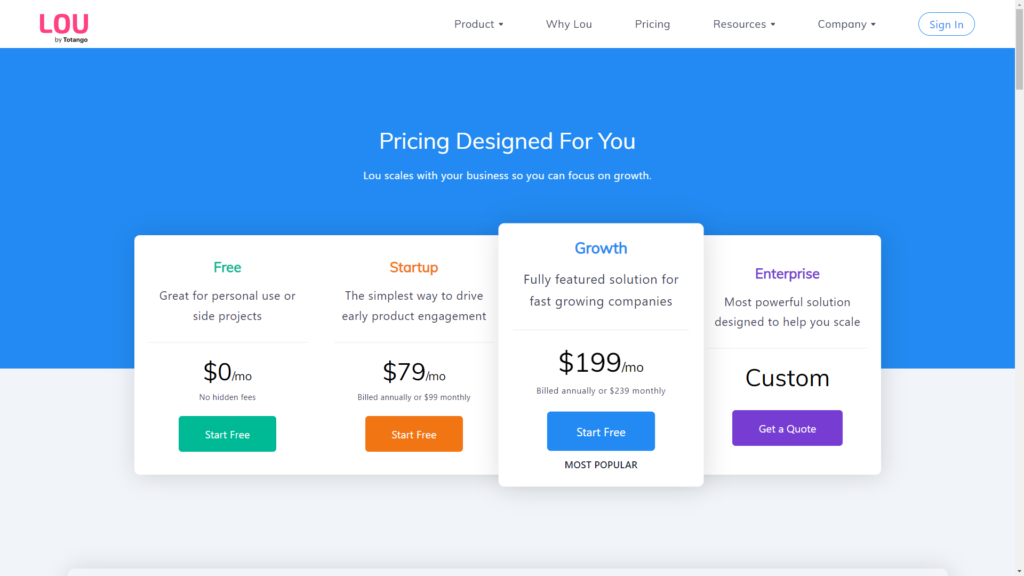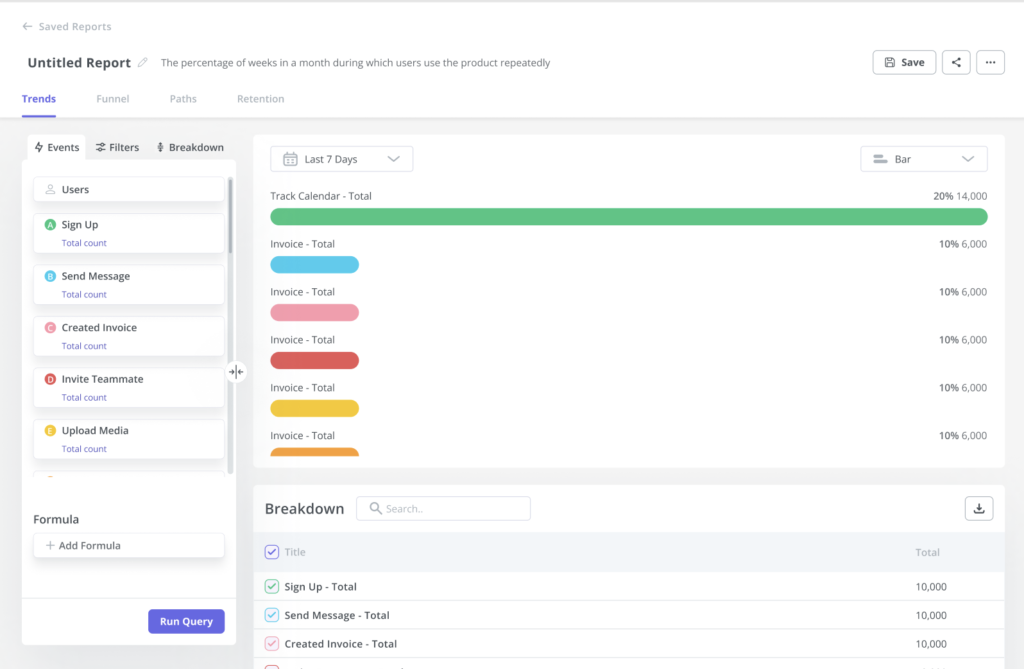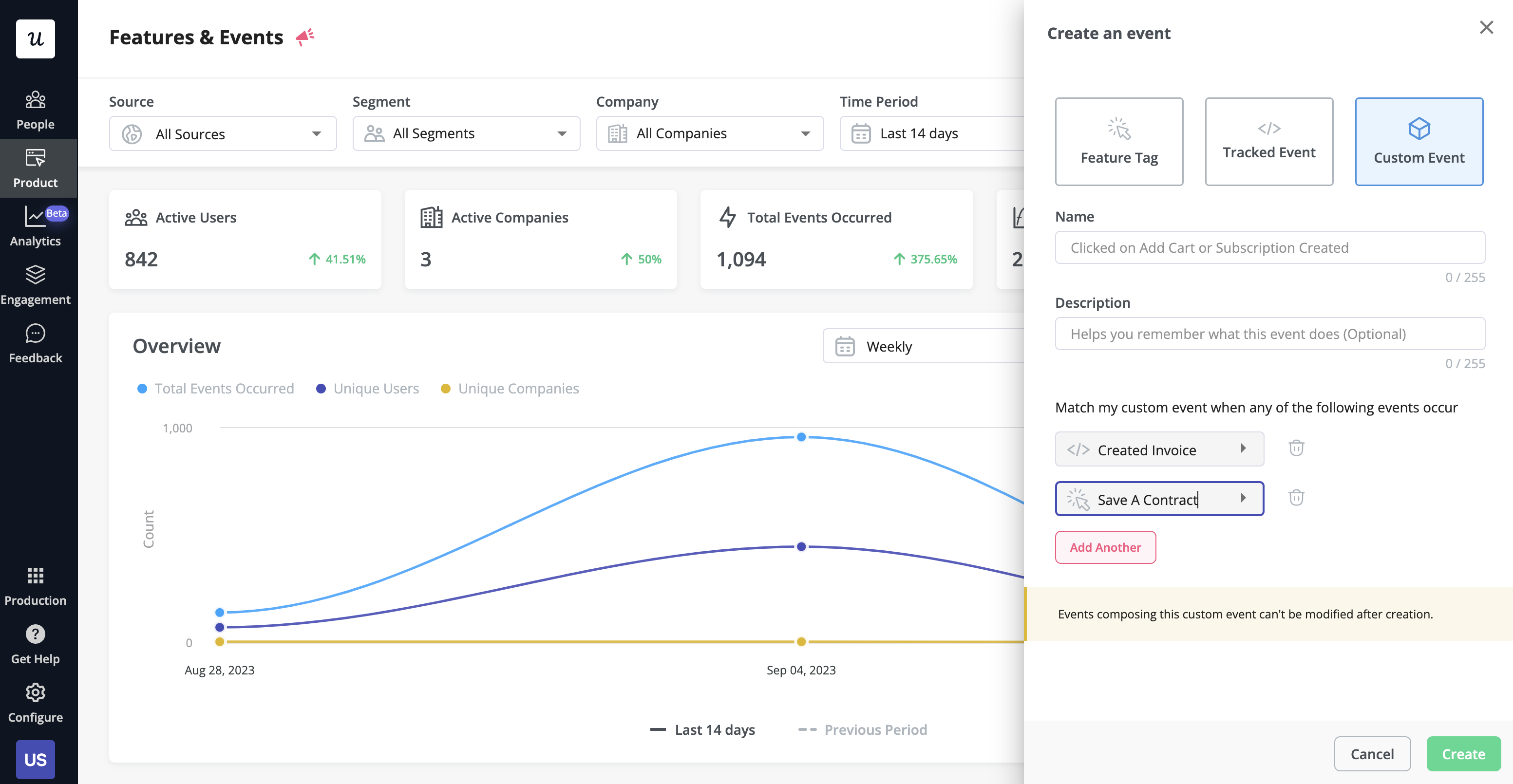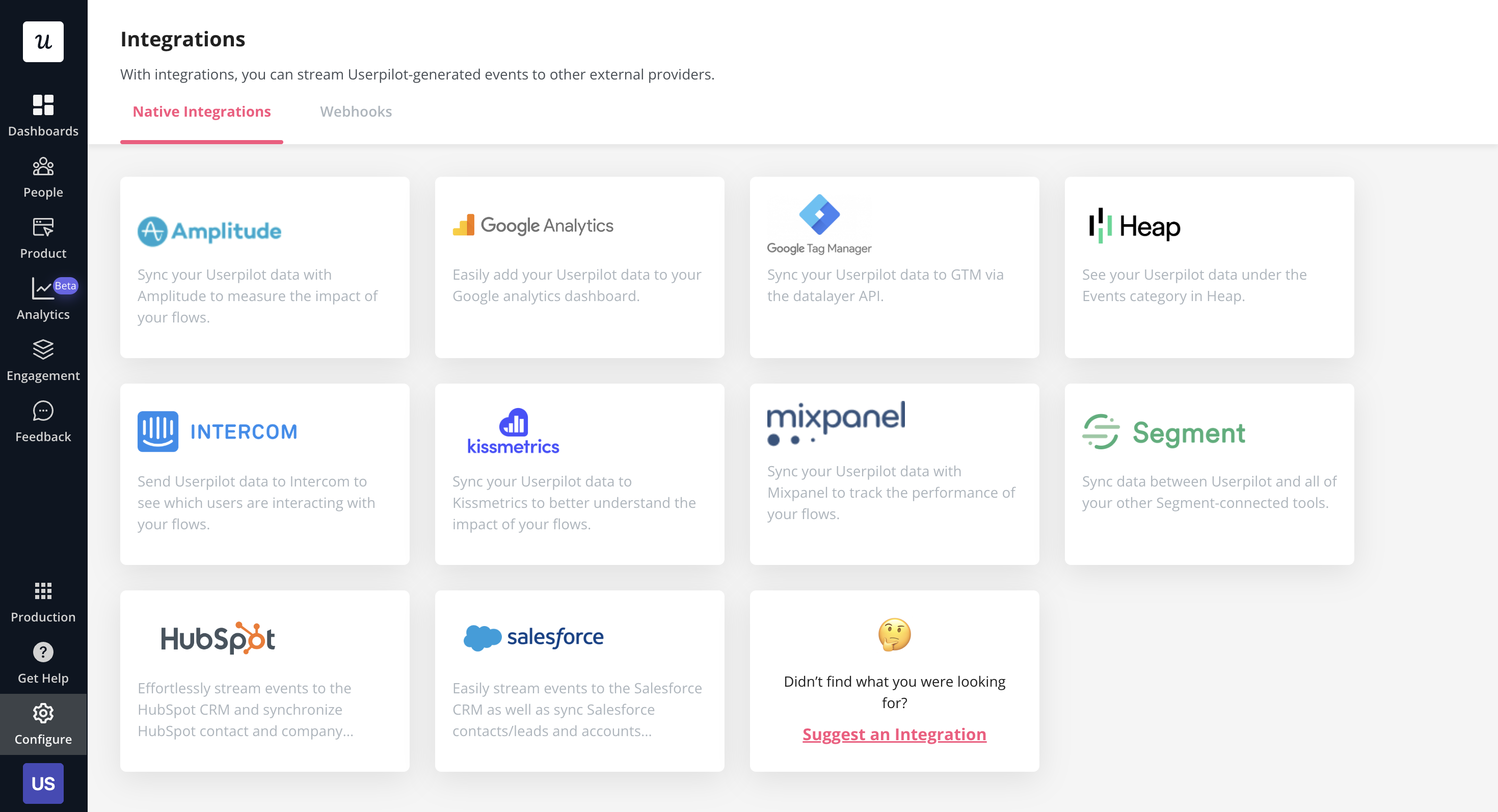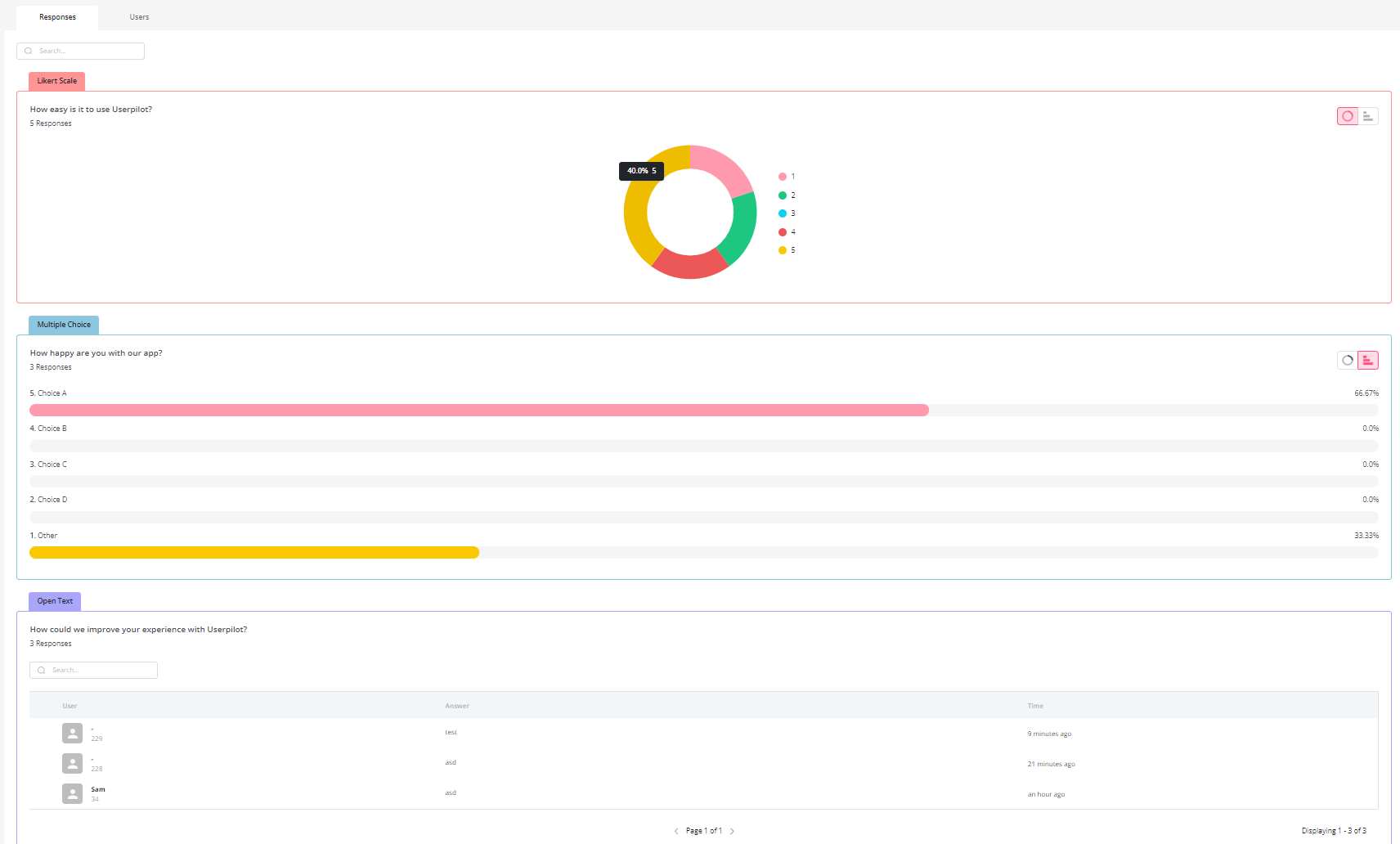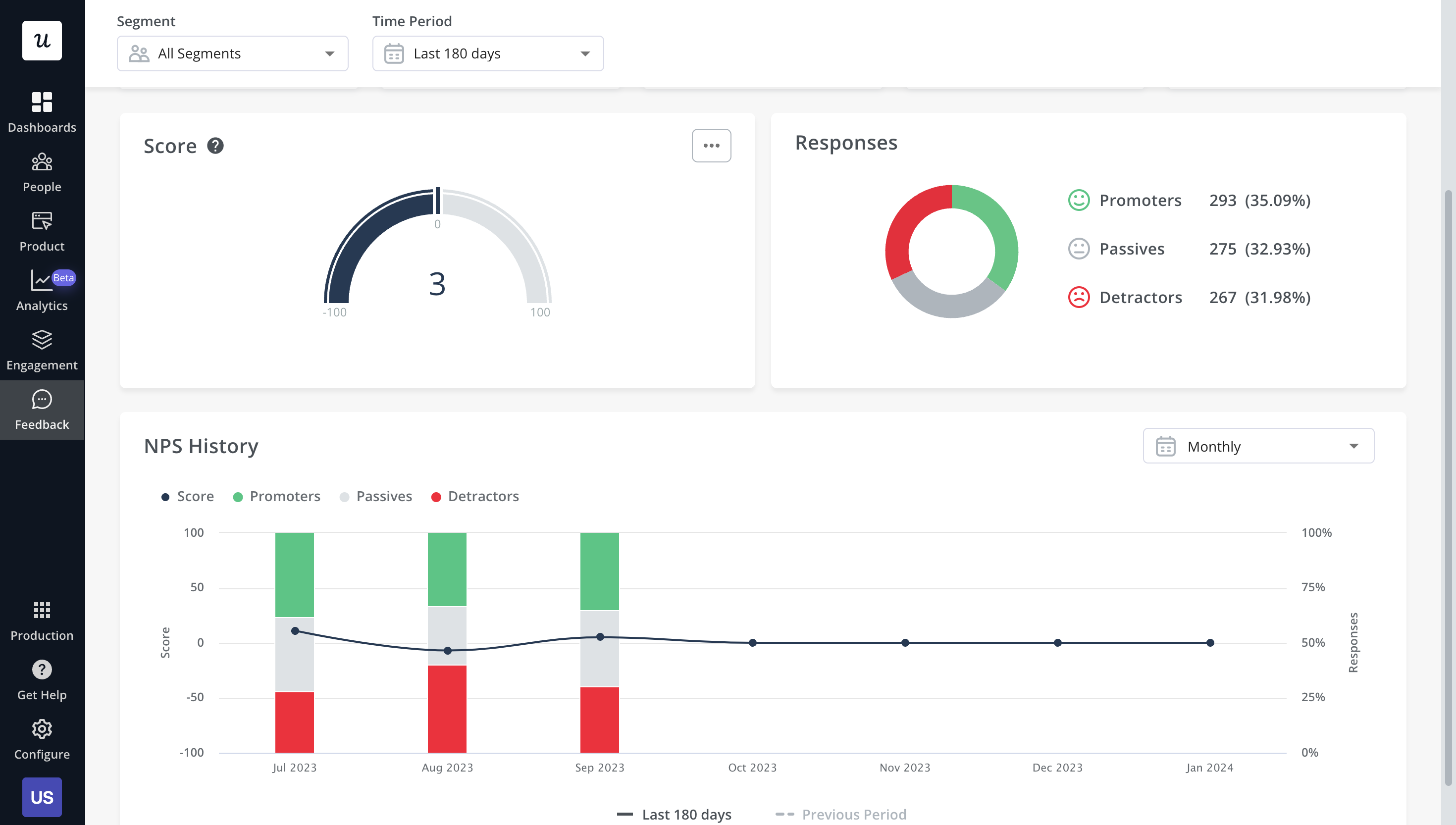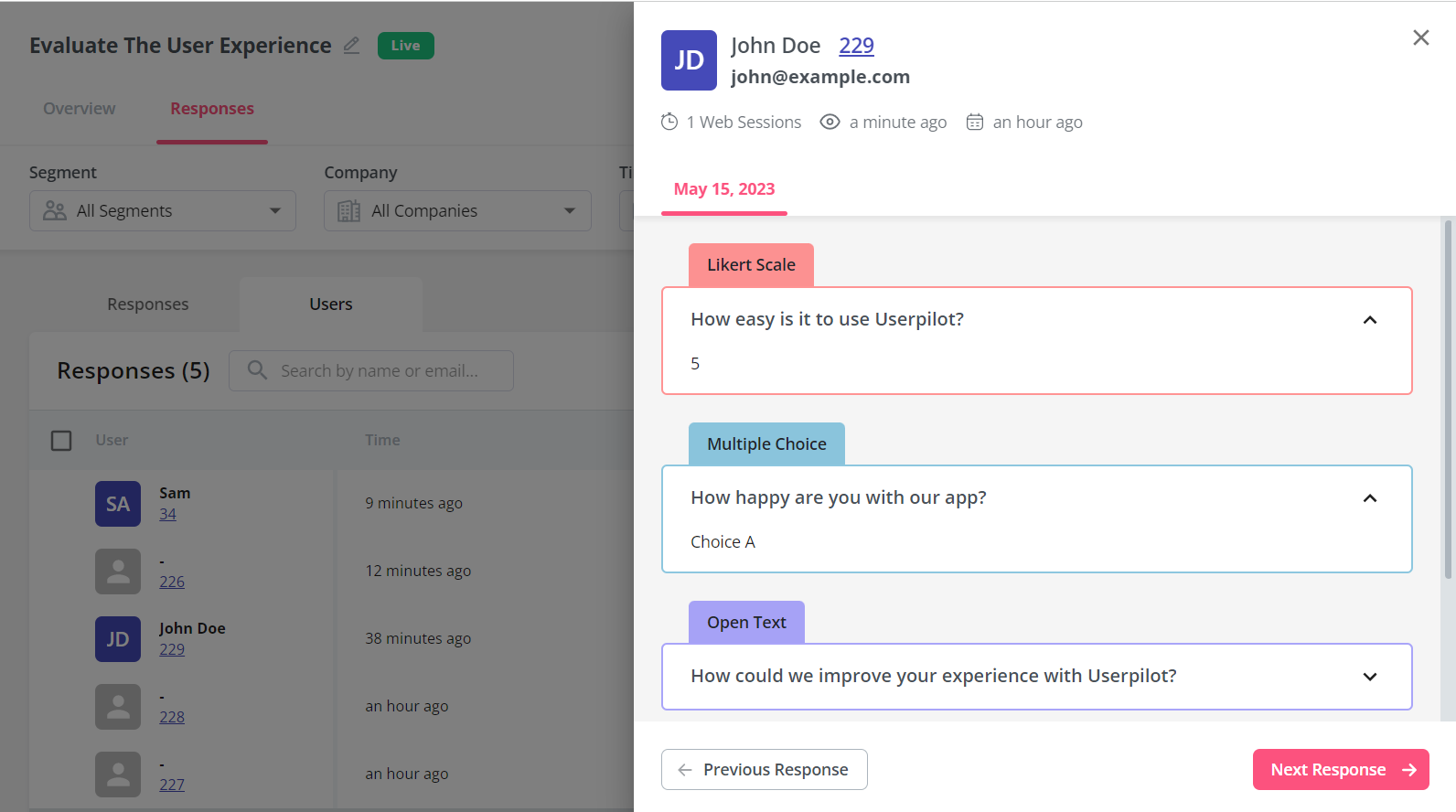
Looking for an effective user engagement analysis tool and wondering if Lou Assist is the best option for your SaaS company?
With numerous Lou Assist alternatives, it can be challenging to make a final decision.
In this article, we’ll delve into precisely that – helping you determine whether Lou Assist is the ideal choice for your user engagement analysis needs. We’ll explore its features, pricing, and offer a comprehensive review to aid in your decision-making process.
Let’s get started!
Try Userpilot Now
See Why 1,000+ Teams Choose Userpilot

TL;DR
- Lou Assist is a good choice for user engagement analysis and it comes with features such as feature tags, in-app events, behavioral analytics, and survey analytics.
- Lou Assist is an attractive product adoption platform with versatile in-app experiences and a freemium option to boot, yet its limitations in certain use cases may prompt you to look elsewhere:
- Product Analytics: Lou Assist doesn’t have any product usage analytics capabilities. This means that its dashboards can only show you engagement metrics for content and experiences you’ve built within the Lou Assist platform rather than actual product analytics.
- International Users: Those with an international user base will be better served by other adoption platforms on the market. Lou Assist lacks any localization capabilities which makes creating in-app experiences for different languages a time-consuming hassle.
- Mobile Onboarding: Because Lou Assist is designed to be used on web apps rather than mobile apps, it has no compatibility with products developed for mobile platforms. If you’re developing a mobile app then consider alternatives like Appcues or Pendo.
- If you’re looking for a better option for user engagement analysis, Userpilot exceeds both functionality and value for money compared to Lou Assist.
- Ready to see Userpilot in action? Schedule a demo today to explore its powerful user engagement analysis capabilities firsthand.
Looking for a Better Alternative for User Engagement Analysis? Try Userpilot

What is Lou Assist?
Lou Assist is a product adoption tool built by the customer success platform Totango. It lets product teams add in-app guidance in the form of modals, tooltips, hotspots, banners, and highlights that can be built without writing any code.
Additionally, Lou Assist helps product teams collect feedback from their users by adding surveys within in-app experiences or creating NPS surveys to measure loyalty/advocacy.
Those who upgrade to the paid version of Lou Assist can also utilize its integrations with 14 third-party tools.
Must have features of user engagement analysis tools
Here are some must-have features that you should look for when considering a user engagement tool:
- Have different UI patterns such as checklists, modals, tooltips, banners, and hotspots – so you can build interactive in-app experiences to drive engagement.
- Options to offer in-app support by creating a resource center so you can provide users with easy access to help articles, tutorials, and FAQs.
- Advanced segmentation features that allow you to filter customers based on product usage, in-app behavior, user feedback, etc. – so you can trigger flows or send hyper-personalized messages.
- A/B test for driving engagement that helps you identify what change is necessary to improve user experiences and increase conversion.
- User survey features for you to collect insights on user engagement and satisfaction – so you can improve your product offerings.
- Product analytics feature for engagement data visualization which enables you to track and act on user behavior data.
Lou Assist features for user engagement analysis
Behavioral analytics give you a better understanding of user behavior so you can make decisions based on how customers actually use your product. Lou Assist doesn’t have a dedicated behavioral analytics dashboard but it does have features and integrations that can be applied to this use case.
Here’s an overview of Lou Assist’s behavioral analytics capabilities:
- Checklists: Lou Assist checklists help you interpret user behavior by seeing which tasks they complete versus which tasks get skipped (and how long completion takes). Unfortunately, you can only have one checklist active at a time on the entry-level Startup plan ($79/month).
- A/B Testing: Lou Assist also has A/B testing functionality that can help you compare user behavior between a control group and a group who have been shown an in-app experience. For instance, you can see what percentage of users completed a goal after completing a tour.
- Integrations: Lou Assist does have a third-party integration that allows it to receive user traits from Segment (a customer data platform with behavioral segmentation capabilities). However, this is a one-way integration that can only receive data from Segment but not send data back.
Note: Third-party integrations are only available on the Startup plan ($79/month) of Lou Assist or higher.
Lou Assist’s feature tags
Lou Assist doesn’t have any product usage/adoption or feature tagging capabilities. This means you won’t be able to use the solution to tag your features and monitor interactions. It does have integrations with third-party analytics tools, but these are only for sending Lou Assist-based events.
Note: These one-way integrations with analytics tools are only available on the Startup plan ($79/month) of Lou Assist or higher.
Lou Assist’s in-app events
Event tracking is incredibly important for identifying usage patterns, understanding user behavior, and extracting actionable insights from product data.
Lou Assist lets you track events by copying code snippets, attaching triggers to elements, and integrating third-party analytics tools. It currently doesn’t support feature tags like other more advanced tools like Userpilot.
Here’s how you can use Lou Assist as an event-tracking tool:
- Tracking Snippet: In-app event tracking can be accomplished by copying Lou Assist’s tracking snippet — LOU.track(’Event Name’). You can also use the Segment integration to go code-free but you’d need to upgrade to paid.
- Event Triggers: You can also trigger events and experiences when users interact with an element. Interactions include clicking on the element or hovering over it.
- Analytics Integrations: Lou Assist has integrations with popular analytics tools like Amplitude, Mixpanel, Heap, Segment, Google Analytics, and more. Unfortunately, these are all one-way integrations that can only listen for Lou Assist events but not send data back (except Segment).
Note: Third-party integrations are only available on the Startup plan ($79/month) of Lou Assist or higher.
Lou Assist’s behavioral analytics
Behavioral analytics give you a better understanding of user behavior so you can make decisions based on how customers actually use your product. Lou Assist doesn’t have a dedicated behavioral analytics dashboard but it does have features and integrations that can be applied to this use case.
Here’s an overview of Lou Assist’s behavioral analytics capabilities:
- Checklists: Lou Assist checklists help you interpret user behavior by seeing which tasks they complete versus which tasks get skipped (and how long completion takes). Unfortunately, you can only have one checklist active at a time on the entry-level Startup plan ($79/month).
- A/B Testing: Lou Assist also has A/B testing functionality that can help you compare user behavior between a control group and a group who have been shown an in-app experience. For instance, you can see what percentage of users completed a goal after completing a tour.
- Integrations: Lou Assist does have a third-party integration that allows it to receive user traits from Segment (a customer data platform with behavioral segmentation capabilities). However, this is a one-way integration that can only receive data from Segment but not send data back.
Note: Third-party integrations are only available on the Startup plan ($79/month) of Lou Assist or higher.
Lou Assist’s survey analytics
Survey analytics are incredibly important for interpreting user feedback and extracting insights from responses. Lou Assist helps you view response data, track quantitative scores, and monitor NPS metrics through dedicated analytics dashboards.
Here’s how you can use Lou Assist for survey data analysis:
- Response Insights: Short answer surveys collect qualitative responses that you can view by going into each respective in-app experience within your “Experiences” dashboard. You’ll be able to see the total survey views, completion rate, timestamps, and the user ID of each respondent.
- Quantitative Data: Creating 0-10 score surveys within your in-app experiences will generate quantitative analytics dashboards. This report will show you how many users viewed/responded to the survey, the number of votes each score got, and how scores have changed over time.
- NPS Dashboard: Lou Assist’s dedicated NPS dashboard compiles response data to automatically calculate the most relevant metrics. This includes the number of responses, percentage of promoters/passives/detractors, final score, and score trends for a specific date range.
What are the pros and cons of Lou Assist?
Lou Assist’s pros
There are plenty of benefits to using Lou Assist, but the most notable are its unlimited capacity freemium plan, diverse array of UI patterns, and advanced targeting settings:
- Unlimited MAUs: The free version of Lou Assist doesn’t cap the number of monthly active users (MAUs) you can have on your platform. This stands in contrast to competitors like Pendo, which force customers to upgrade to a paid plan once they hit the 500 MAUs limit.
- UI Patterns: There’s a wide variety of UI patterns to choose from when building in-app experiences with Lou Assist. You can add modals, tooltips, hotspots, banners, and highlights, then adjust their design or positioning as needed.
- Targeting Settings: Lou Assist can target based on which segment a user is in, what page they’re on, and whether or not they’ve already completed the experience before. You can also adjust launch priority and frequency settings to dictate which experiences should appear or how often.
Lou Assist’s cons
Of course, Lou Assist has its fair share of drawbacks as well — and some of these cons even hinder or negate the benefits the platform has to offer:
- Analytics Dashboards: While Lou Assist does have analytics dashboards that can show you how in-app experiences, checklists, or surveys are performing, it only measures the performance of content created within the platform. There are no product usage analytics dashboards.
- Freemium Limitations: Despite the uncapped MAUs, the free version of Lou Assist has quite a few limitations. You’ll only be able to publish one tour, checklist, and survey at a time. You’ll also be limited to two announcements and won’t be able to create custom themes.
- Segment Caps: Lou Assist’s advanced targeting is hindered by the segmentation limits imposed by its pricing structure. Users on the free version can only create one custom segment, while those on the entry-level Startup plan can only create three.
Note: You can create unlimited segments if you subscribe to the Growth plan or higher but that tier starts at $239/month.
What do users say about Lou Assist?
Lou Assist users praised the flexibility that its various UI patterns provide, as well as the customizability that each in-app experience offers:
“It allows you to create different types of onboarding experiences for any kind of SaaS product, it feels well-categorized and provides a nice degree of customization.”
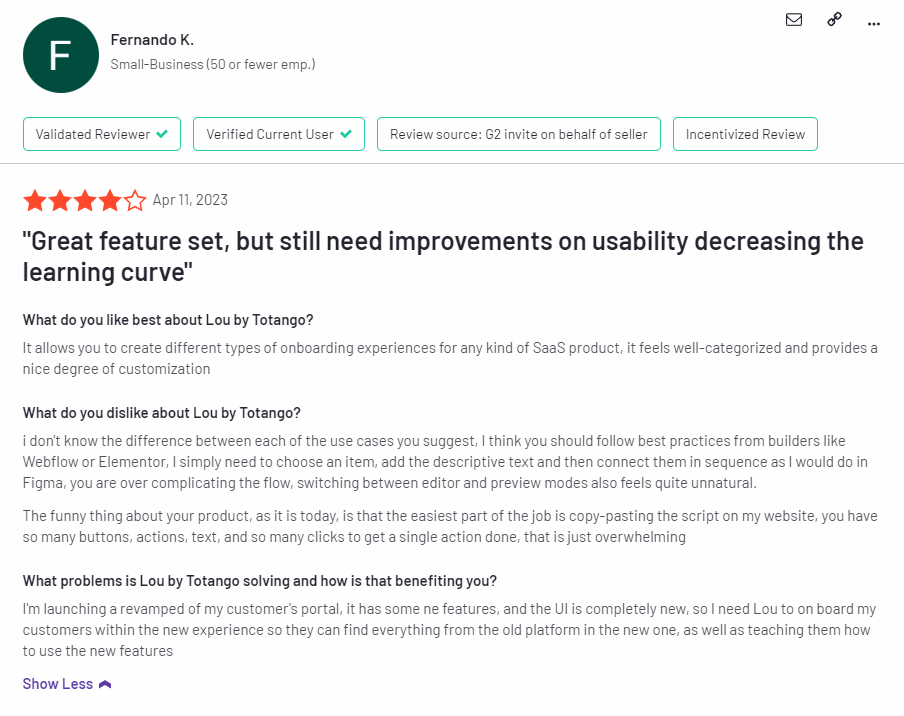
“Personalization is not deep enough, I encounter many many many bugs when editing modals. Sometimes it works, sometimes it doesn’t and it is very frustrating. Language is not supported so I have to make different modals for all my international users.”
Lou Assist’s pricing
Lou Assist has a free version that supports unlimited MAUs as well as three paid plans that can accommodate 2,500 to 10,000+ MAUs. The paid subscriptions range from $79/month on the entry-level Startup plan (with the annual discount) to $239/month for the Growth plan.
Here’s a closer look at each Lou Assist plan:
- Free: The Free plan doesn’t limit the number of monthly active users but does cap the number of tours, checklists, surveys, and announcements you publish. You won’t be able to use third-party integrations or create custom themes either.
- Startup: Starting at $79/month, it offers three team sets and can accommodate up to 2,500 MAUs. You’ll be able to publish unlimited tours/announcements but only one checklist and three surveys at a time.
- Growth: The Growth plan starts at $239/month (or $199/month if you pay annually) and increases your subscription’s capacity to 10,000 MAUs. You’ll also get 10 team sets and be able to publish an unlimited number of tours, checklists, surveys, and announcements.
- Enterprise: Lou Assist’s Enterprise tier operates on a quote-based pricing system but offers flexible MAU limits and unlimited team seats. You’ll also get a custom service-level agreement (SLA). Enterprise subscriptions have no monthly payment option, so you’ll need to pay annually.
3 Reasons why you might need a Lou Assist alternative
Lou Assist is an attractive product adoption platform with versatile in-app experiences and a freemium option to boot, yet its limitations in certain use cases may prompt you to look elsewhere:
- Product Analytics: Lou Assist doesn’t have any product usage analytics capabilities. This means that its dashboards can only show you engagement metrics for content and experiences you’ve built within the Lou Assist platform rather than actual product analytics.
- International Users: Those with an international user base will be better served by other adoption platforms on the market. Lou Assist lacks any localization capabilities which makes creating in-app experiences for different languages a time-consuming hassle.
- Mobile Onboarding: Because Lou Assist is designed to be used on web apps rather than mobile apps, it has no compatibility with products developed for mobile platforms. If you’re developing a mobile app then consider alternatives like Appcues or Pendo.
Note: Lou Assist is able to adjust screen sizes when your web app is viewed on mobile devices.
Userpilot – A better alternative for user engagement analysis

Here are some Userpilot features you can use for user behavior tracking:
- No-Code Feature Tagging: Userpilot’s click-to-track feature tagger lets you mark features, buttons, and elements with the Chrome extension. You’ll be able to track user interactions such as clicks, hovers, or inputs to get an accurate behavioral view for specific features.
- Funnel Reports: Funnel reports show you the total number of users that enter a funnel and the percentage of users that complete each step. This can help you track behavioral paths and see which stages most users get stuck on.
- Trends Reports: Generating trends reports will help you visualize the occurrence of key events over time and break down these analytics by device, browser, operating system, country, signup date, or even individual user IDs and email addresses to see granular behavioral analytics.
Userpilot’s in-app events
Tracking and analyzing event data gives you a better understanding of user behavior so you can capitalize on opportunities to improve the in-app experience.
Here are the ways you can use Userpilot as an event-tracking tool:
- Event tracking: The Userpilot flow builder lets you track custom events by tagging individual features (Feature Tag), by API (called Tracked Events) or by setting them up using a combination of feature tags and tracked events (Custom Events).
- Data integrations: Userpilot has native integrations with popular analytics tools like Amplitude, Mixpanel, Google Analytics, and more. This makes it possible to sync your event data across multiple tools within your tech stack.
Userpilot’s behavioral analytics
Behavioral analytics make it possible to monitor user activity, group data into cohorts, and extract relevant metrics/insights. Userpilot lets you tag features to see how users interact with them, compare goals by cohort, and create trend reports that track behavioral patterns over time.
Here are some Userpilot features you can use for user behavior tracking:
- No-Code Feature Tagging: Userpilot’s click-to-track feature tagger lets you mark features, buttons, and elements with the Chrome extension. You’ll be able to track user interactions such as clicks, hovers, or inputs to get an accurate behavioral view for specific features.
- Funnel Reports: Funnel reports show you the total number of users that enter a funnel and the percentage of users that complete each step. This can help you track behavioral paths and see which stages most users get stuck on.
- Trends Reports: Generating trends reports will help you visualize the occurrence of key events over time and break down these analytics by device, browser, operating system, country, signup date, or even individual user IDs and email addresses to see granular behavioral analytics.
Userpilot’s survey analytics
Survey analytics are an essential part of extracting actionable insights from user feedback. Userpilot’s advanced analytics capabilities extend to any surveys you build with it. You’ll be able to see granular analytics for surveys, sort by audience or time period, and view NPS data separately.
Here’s an overview of the Userpilot features you can use during survey data analysis:
- Granular analytics: Each survey you create has its own analytics tab where you’ll be able to see which percentage of respondents chose a particular option, view the most popular choices, and review qualitative responses of users. You can also sort by segment, company, or time period.
- NPS dashboard: The dedicated NPS dashboard compiles survey responses to show you all relevant Net Promoter Score data in one place. This includes total views, NPS score, total responses, overall response rate, the number of qualitative responses, and how NPS is trending over time.
- User responses: Userpilot lets you review the responses of each individual user so you can see how sentiment differs on a customer-to-customer basis. This makes it easier to schedule follow-up interviews or implement suggestions made by users with the highest lifetime value (LTV).
What are the pros and cons of Userpilot?
Userpilot pros
As a full-suite digital adoption platform, Userpilot has all the features you need to onboard users, track analytics, and gather feedback from customers without writing a single line of code. Here are a few pros of using Userpilot as your product growth solution:
- No-code builder: Userpilot’s Chrome extension lets you build flows, add UI elements, and tag features without writing a single line of code.
- UI patterns: There are plenty of UI patterns to choose from when using Userpilot, such as hotspots, tooltips, banners, slideouts, modals, and more!
- Startup-friendly: Userpilot’s entry-level plan gives you access to all available UI patterns so you can hit the ground running.
- Walkthroughs and flows: Build engaging interactive walkthroughs and personalized onboarding flows that target specific segments of your user base.
- Self-service support: Build an in-app resource center to help users solve problems, customize its appearance to align it with your brand, and insert various types of content (videos, flows, or chatbots) to keep your customers satisfied.
- A/B testing: Userpilot’s built-in A/B testing capabilities will help you split-test flows, iterate on the best-performing variants, and continually optimize based on user behavior.
- Feedback collection: Userpilot has built-in NPS surveys with its own unified analytics dashboard and response tagging to help you retarget users. There are other survey types to choose from and you can even create your own custom survey.
- Survey templates: There are 14 survey templates to choose from so you can gather feedback on specific features or run customer satisfaction benchmarking surveys like CSAT and CES.
- Advanced analytics: Userpilot lets you analyze product usage data, monitor engagement on all in-app flows, and use the data to create user segments that are based on behaviors instead of demographics.
- Event tracking: Userpilot’s no-code event tracking lets you tag UI interactions (hovers, clicks, or form fills) and group them into a custom event that reflects feature usage.
- Mobile: Userpilot’s mobile SDK includes a full suite of engagement tools, carousels, slideouts, push notifications, and in-app surveys (NPS, CSAT, CES) that enable personalized user interactions.
- Third-party integrations: Userpilot has built-in integrations with tools like Amplitude, Mixpanel, Kissmetrics, Segment, Heap, HubSpot, Intercom, Google Analytics, and Google Tag Manager so you can share data between all the solutions in your tech stack.
Userpilot’s cons
Of course, no tool is perfect and there are a few cons to consider before choosing Userpilot as your user onboarding or product growth solution:
- Employee onboarding: Currently, Userpilot only supports in-app customer onboarding.
- Freemium plan: There’s no freemium Userpilot plan so those bootstrapping their startup and need sub-$100 solutions should consider more affordable onboarding platforms like UserGuiding or Product Fruits.
What do users say about Userpilot?
Most users laud Userpilot for its versatile feature set, ease of use, and responsive support team:
I recently had the pleasure of using Userpilot, and I must say it exceeded all my expectations. As a product manager, I’m always on the lookout for tools that can enhance user onboarding and improve overall user experience. Userpilot not only delivered on these fronts but also went above and beyond with its impressive new features, unparalleled ease of use, and truly exceptional customer support.
What truly sets Userpilot apart is its outstanding customer support. Throughout my journey with Userpilot, the support team has been responsive, knowledgeable, and genuinely dedicated to helping me succeed. Whenever I had a question or encountered an issue, their support team was always there to assist promptly, going above and beyond to ensure my concerns were addressed effectively.
Source: G2.
Of course, other users are also kind enough to share constructive criticism regarding specific features like event tracking filters:
“The filtration while analyzing specific events is a little confusing. Understanding of custom properties and data management configuration could have been more organised.”
Source: G2.
Userpilot’s pricing
Userpilot offers flexible pricing based on your monthly active users (MAUs). Plans start at $299 per month for smaller teams and scale as your user base grows.
Below are the pricing tiers you can choose from:
- The Starter plan begins at $299/month (billed annually) for up to 2,000 monthly active users. It includes in-app user engagement, usage trend analysis, NPS surveys, and essential product analytics—ideal for mid-market SaaS teams getting started.
- The Growth plan offers custom pricing and adds advanced analytics, retroactive event auto-capture, in-app surveys, session replay, and more. It’s the most popular choice for growing teams that need deeper insights and scale.
- The Enterprise plan offers custom pricing and includes everything in Growth, plus bulk data handling, custom roles and permissions, SOC 2 Type 2 compliance, and enterprise-level support.

Conclusion
There you have it.
It should be easier now to make an informed decision whether Lou Assist is your go-to option for user engagement analysis. Ultimately, the best choice will depend on your product and current needs.
If you’re looking for a better alternative to Lou Assist for user engagement analysis, book a Userpilot demo today to experience firsthand how it can enhance your user experience and drive product growth!
Looking for a Better Alternative for User Engagement Analysis? Try Userpilot


